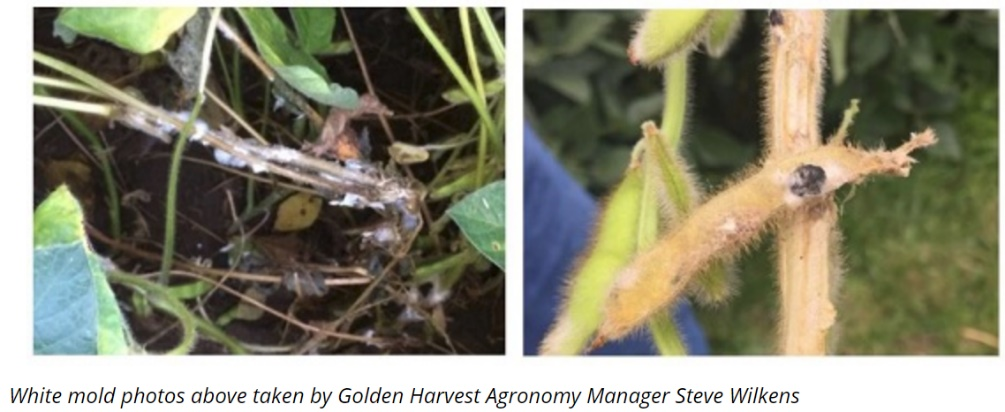ILSOYADVISOR POST
White Mold Risks in 2019
In a year with delayed planting and struggles to get the crop planted I thought about changing my topic from Sclerotinia stem rot (Soybean White Mold) to a different topic. But if we look at the early planted soybeans getting close to closing the rows and the possibilities of a wet summer, we need to manage the crop that is in the ground to maximize yield.
 Understanding White Mold: Soybean white mold (SWM) is a disease that infects soybeans at the flowers, and then moves to the pods and stems at the node. It gets its name from the white mycelial growth that extends from that node along the stem. As the disease progresses Sclerotia are formed inside the stems, pods, and along the outside of the stem making it easy to spread with harvest equipment to a larger area of the field and to the next field creating more risk the next time a susceptible crop is planted.
Understanding White Mold: Soybean white mold (SWM) is a disease that infects soybeans at the flowers, and then moves to the pods and stems at the node. It gets its name from the white mycelial growth that extends from that node along the stem. As the disease progresses Sclerotia are formed inside the stems, pods, and along the outside of the stem making it easy to spread with harvest equipment to a larger area of the field and to the next field creating more risk the next time a susceptible crop is planted.
SWM becomes more aggressive in cooler wetter years when temperatures are below 85oF. If weather forecasts are correct for this summer, this disease could be a major issue in Northern Illinois this year. The University of Wisconsin has developed a great tool that can track the odds of getting SWM, Sporecaster. They have also developed a tool to help determine the profitability of utilizing different treatments, Sporebuster. While new fungicides such as Miravis® Neo are not in the Sporebuster app additional tools are becoming more available to manage SWM.
In Season Management: As growers are spaying post herbicides prior to first flower they may consider utilizing a post applied PPO herbicide (Blazer®, Cobra®, Reflex®, Flexstar®) as part of the mix as they trigger a defensive response in the plant that helps manage SWM along with controlling weeds at the same time.
Some fungicides are also effective at managing SWM, but need to be sprayed at R1 to maximize performance. While a list of these active ingredients is in the Sporebuster app here are some of the common names Miravis Neo, Aproach®, Domark®, Endura®, Omega®, Proline®, Propulse®, Topsin®-M, & TopGuard®. Two solid resources for fungicide performance are:
https://learningstore.uwex.edu/Assets/pdfs/A3646.pdf#page=167 and
for the products that have been on the market for a number of years. In problem areas with a history of white mold, a second application may be needed if favorable conditions for the disease persist and a lack of residual control is available.
While whole fields have been impacted, many times there are hot spots and historical problem areas that can be mapped and managed separately to help manage cost while choosing the most effective products. Mapping fields for future management is also recommended.
Soybean variety selection is one of the most effective management tools along with reducing populations and opening the canopy even just a little bit can make a significant difference. Many believe wider rows help as well. Fields with a historical problem can also apply Contans® as a tool that reduces the survivability of the sclerotia reducing future inoculum.





Comments
Add new comment